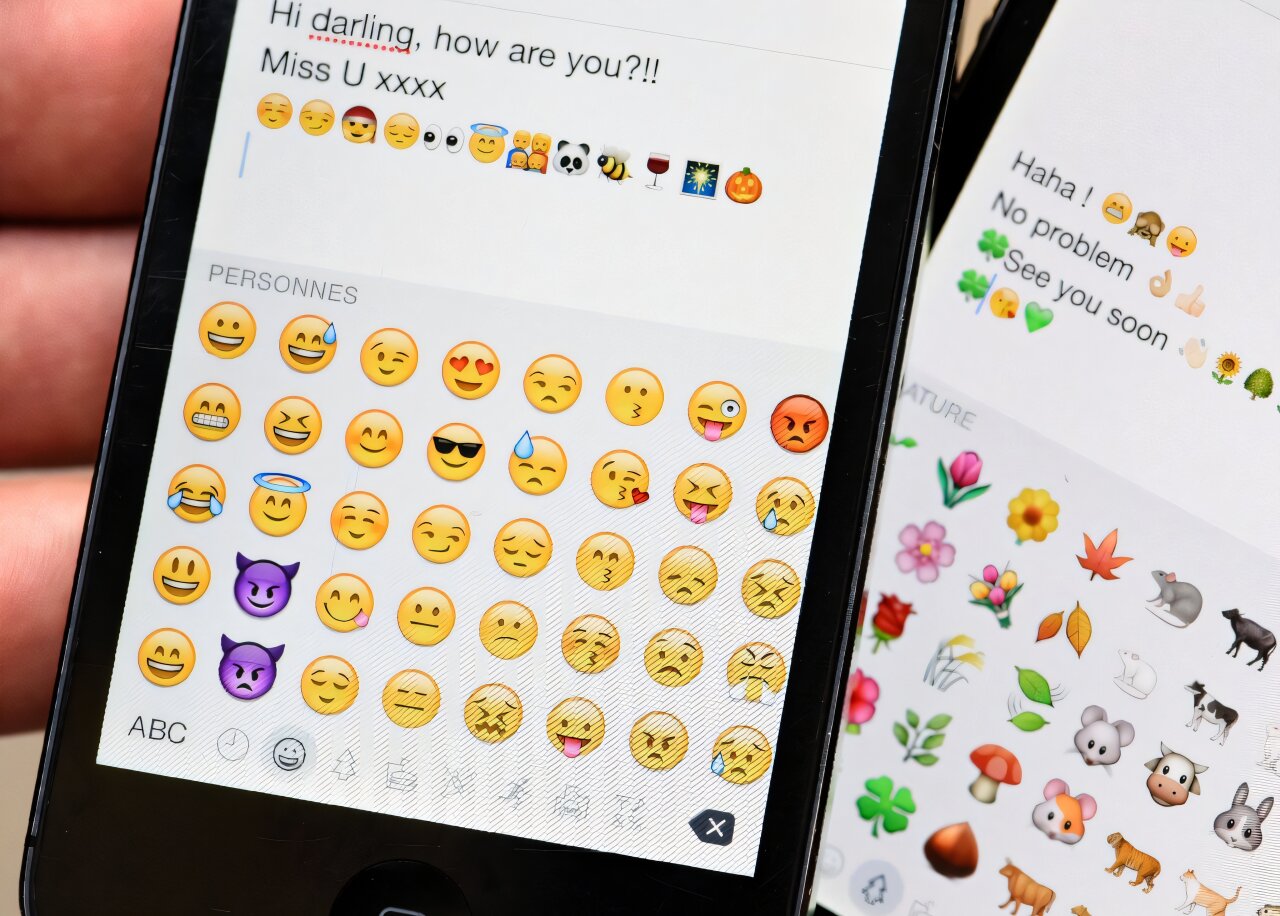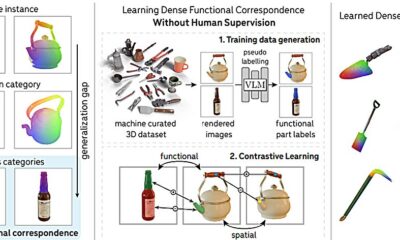Tech
Amazon links planned mass layoff to AI | Computer Weekly

Amazon plans to lay off 14,000 employees amid an artificial intelligence (AI)-enabled cost-cutting drive.
On 28 October 2025, Amazon’s senior vice-president of people, experience and technology Beth Galetti confirmed to employees that the e-commerce behemoth plans to axe 14,000 roles from its corporate workforce, something she specified has been prompted and enabled by the firm’s AI investments.
“The reductions we’re sharing today are a continuation of this work to get even stronger by further reducing bureaucracy, removing layers and shifting resources to ensure we’re investing in our biggest bets and what matters most to our customers’ current and future needs,” she said in a message sent to employees.
While Galetti signalled further cuts down the line as the company searches for further ways to “realise efficiency gains”, she also said that Amazon expects “to continue hiring in key strategic areas” through 2026.
Although she did not give any indication of what roles are being cut, from which business units or where they will be located globally, she said most employees being let go will be offered a 90-day window to look for new roles internally.
Galetti explicitly cited AI as a key factor contributing to the layoffs. “Some may ask why we’re reducing roles when the company is performing well … What we need to remember is that the world is changing quickly,” she said.
“This generation of AI is the most transformative technology we’ve seen since the internet, and it’s enabling companies to innovate much faster than ever before (in existing market segments and altogether new ones). We’re convicted that we need to be organised more leanly, with fewer layers and more ownership, to move as quickly as possible for our customers and business.”
Galetti also referenced and linked to two previous employee messages from Amazon CEO Andy Jassy. In the first, from September 2024, Jassy outlined the company’s ambitions “to operate like the world’s largest startup”, while in the second, from June 2025, he evangelised the “once-in-a-lifetime” potential of generative AI (GenAI) technologies to achieve this.
Highlighting how “AI will be a substantial catalyst” reshaping Amazon’s future workforce composition, Jassy said in June 2025 that over the next few years, “we expect that this will reduce our total corporate workforce as we get efficiency gains from using AI extensively across the company”.
He concluded by encouraging employees to “be curious” and “educate yourself” about the technology’s potential: “Those who embrace this change, become conversant in AI, help us build and improve our AI capabilities internally and deliver for customers, will be well-positioned to have high impact and help us reinvent the company.”
Amazon’s last major round of job cuts came in early 2023. While the company sought to initially cut 18,000 jobs from its workforce in January that year, citing over-hiring during the Covid-19 pandemic, a further 9,000 cuts were announced that March, bringing the total to 27,000. A further round of job losses, which affected several hundred tech and sales staff at Amazon Web Services (AWS) specifically, came in April 2024.
From January to August 2024 thousands of tech sector jobs were axed, with many tech firms explicitly linking the layoffs taking place to the proliferation of AI and machine learning throughout their businesses.
This included Cisco, which cut 7% of its workforce while investing $1bn in AI-related startups; Dell, which cut sales roles to reallocate resources to its AI teams; Meta, which, according to CEO Mark Zuckerberg, laid employees off “so we can invest in these long-term, ambitious visions around AI”; and Intuit, which cut 1,800 staff to free up more resources for integrating AI into its software offerings.
In November 2023, the Autonomy Institute think tank argued that although automating jobs with large language models (LLMs) could lead to significant reductions in working time without a loss of pay or productivity, realising the benefits of AI-driven productivity gains in this way will require concerted political action.
In a paper published 20 November 2023, Autonomy forecast that AI-led productivity gains could enable 8.8 million UK workers to have a four-day work week by 2033, while just under 28 million could have their working hours reduced by 10% in the same time, if LLMs are deployed in the right way.
“Our research offers a fresh perspective in debates around how AI can be utilised for good,” said Autonomy’s director of research, Will Stronge, at the time. “A shorter working week is the most tangible way of ensuring that AI delivers benefits to workers as well as companies. If AI is to be implemented fairly across the economy, it should usher in a new era of four-day working weeks for all.”
Autonomy noted that although people have long been predicting and expecting far shorter working weeks due to technological advances, historical increases in productivity over recent decades have not translated into increased wealth or leisure time for most people, largely as a result of economic inequality.
It said there is often a sense of pessimism around AI-driven productivity gains, with most conversations emphasising the potential for job losses and degraded working conditions, but that such gains could also be used to deliver shorter working weeks for many while also maintaining their pay and performance.
However, Autonomy was clear that productivity gains are not always shared evenly between employers and employees, and depend on “geographic, demographics, economic cycle and other intrinsic job market factors” such as workers’ access to collective bargaining.
“This is a paper that identifies an opportunity and not a destiny. The actual diffusion and adoption of technology is always uneven, driven by a variety of factors: wage levels, government policy, levels of sector monopolisation, trade union density and so on,” it said.
Tech
Australian police design AI tool to decipher predators’ Gen Z slang

Australian police are working on an AI prototype that will help them decipher Gen Z slang and emoji-laden messages written by online predators, a top official said Wednesday.
Australian Federal Police Commissioner Krissy Barrett said social media had become a breeding ground for bullying, sexual exploitation and radicalization.
Police were working with software giant Microsoft to develop a tool that would unravel sinister messages hidden by seemingly innocuous emojis and slang, she said.
“Clever AFP members, with Microsoft, are developing a prototype AI tool that will interpret emojis and Gen Z-and-Alpha slang in encrypted communications.
“This prototype aims to make it quicker for our teams to save children from harm much earlier.”
Barrett also warned about the rise of so-called “crimefluencers”—online predators who used their social media savvy to target young and vulnerable users.
“They are crimefluencers, and they are motivated by anarchy and hurting others, with most of their victims pre-teen or teenage girls,” she said.
Australia will from December 10 force social media platforms such as Facebook, Instagram and TikTok to remove users under the age of 16.
There is keen interest in whether Australia’s sweeping restrictions can work, as regulators around the globe wrestle with the dangers of social media.
© 2025 AFP
Citation:
Australian police design AI tool to decipher predators’ Gen Z slang (2025, October 29)
retrieved 29 October 2025
from https://techxplore.com/news/2025-10-australian-police-ai-tool-decipher.html
This document is subject to copyright. Apart from any fair dealing for the purpose of private study or research, no
part may be reproduced without the written permission. The content is provided for information purposes only.
Tech
Rainfall Buries a Mega-Airport in Mexico

The story of the park begins in 2014, when Enrique Peña Nieto, the president of Mexico at the time, announced plans for a new transport hub for Mexico City. It would be built on the largely dry bed of Lake Texcoco, the body of water that had once surrounded Mexico City’s ancient ancestor, Tenochtitlán, the center of the Aztec empire. The marketing promise was that NAICM would be one of the greenest airports in the world. The terminal, designed by Norman Foster—winner of the Pritzker Prize in 1999 and the Prince of Asturias Award for the Arts in 2009—was going to be the first to obtain LEED platinum certification, the highest international recognition for energy efficiency and sustainable design.
Its site, Lake Texcoco, had already lost more than 95 percent of its original surface area, and in 2015 plans were made to drain it completely to build the airport. However, when Andrés Manuel López Obrador took office as Mexico’s president in 2018, he canceled the plan. It would end up costing more than $13 billion and would leave behind serious environmental damage: The incomplete project destroyed a key refuge for migratory birds; carved up mountains in the State of Mexico (the federal region that surrounds Mexico City); razed agricultural land; and altered the landscape of the cultural capital of the Nahua, an indigenous people that includes the Mexica (or Aztecs).
Echeverría, who says he has been obsessed with the area for nearly three decades, was appointed by the new government to restore the local ecosystem. “It felt like I was stepping onto Mars,” says the architect, reflecting on being placed at the helm of the project. The park covers an area equivalent to 21 times the area of Mexico City’s enormous Bosque de Chapultepec park. Echeverría offers his own comparisons: “This place is three times the size of the city of Oaxaca and, as a reference for those outside Mexico, it’s roughly three times the size of Manhattan.”
The restoration project wasn’t a mere whim of Mexico’s new president, but the culmination of a century of visions and plans. “We’ve been skating around this for 75 years,” Echeverría says, citing restoration projects that were proposed as early as 1913, including ones by Miguel Ángel de Quevedo (a celebrated early environmentalist) in the 1930s and agronomist Gonzalo Blanco Macías in the 1950s. What was missing, Echeverría says, “wasn’t a lack of ideas, but of political will.”
Tech
Top NordVPN Coupons: 77% Off, Plus 3 Months Free

Whether you’re worried about the open network at your local coffee shop or want to get around geo-restrictions when you’re traveling, NordVPN can help. A virtual private network (VPN) is like a protective tunnel, keeping your data safe from prying eyes. VPNs aren’t perfect protection (you need to trust your VPN provider), but they’re always going to be better than nothing when you’re using a public hotspot. They also make it easy to continue to watch your favorite shows even when you’re on vacation. If you want to learn more about how to protect yourself online, see our guide to The Best VPNs.
Get 77% Off Plans With Exclusive NordVPN Discount Code
NordVPN is pretty much always having a sale, but some of the deals are better than others and this is one of the best we’ve seen. Right now, NordVPN is offering 77% off its regular price, plus an Amazon gift card valued up to $50 when you sign up for a 2-year Prime plan. It’s valid for the first 15 months of the subscription, with threat protection, high-speed VPN, and more. Follow the link above and use our exclusive coupon code at checkout to get the deal.
Save More With a NordVPN Subscription Plan
The two-year Plus plan is the most popular, and our recommendation. For a limited time, their more comprehensive Prime 2-year subscriptions qualify for up to 77% off, and you’ll receive 3 free months with select 2-year plans, starting with the Plus option.
NordVPN offers different plans for different needs, including one-year and one-month plans. Plans’ pricing varies greatly, with short-term, one-month plans starting at $13. The plans get cheaper the longer you commit to a plan, to reward loyal VPN customers. One-year plans start at $5 and go to $10, depending on which package you choose. Two-year plans are even cheaper, starting at $3 and going up to $7 for the top-tier plans with all of the bells and whistles. It makes a lot more sense to invest in a longer protection plan to keep your information and devices safe, for less.
Score a NordVPN Discount Code for 15% Off
The coupons aren’t the only deals to be had. You can wait for a sale (see above) or if you qualify, there are discounts for students, graduates, teachers, healthcare, military, and first responders. Once verified with Student Beans, you can unlock a NordVPN promo code for 15% off plans.
NordVPN Friend Referral Discount
If you like NordVPN, you can save yourself even more with the refer-a-friend promotion. You’ll receive 3 months free for every friend who buys NordVPN through your referral link. The more friends you refer, the more rewards you’ll earn. Your friends will get the same deal you did, 3 extra months if they choose the 1- or 2-year plans or 1 free month if they opt for the monthly plan.
Get the latest NordVPN Plans in 2025
NordVPN has four tiers of plans fit for every type of need. Each gets you a secure VPN, but with each level you’ll get even more perks, like an ad tracker and blocker and 1 TB of Cloud storage. Right now, you can get up to 77% off each plan, including three months free. Check out which plan (and price) is the best fit for you here.
-

 Fashion1 week ago
Fashion1 week agoChinese woman charged over gold theft at Paris Natural History Museum
-

 Entertainment1 week ago
Entertainment1 week agoJohn Grisham unveils his first-ever mystery, “The Widow”
-

 Tech1 week ago
Tech1 week agoThis Smart Warming Mug Is Marked Down by $60
-

 Tech1 week ago
Tech1 week agoEaster Island’s Moai Statues May Have Walked to Where They Now Stand
-

 Tech1 week ago
Tech1 week agoOpenAI has slipped shopping into ChatGPT users’ chats—here’s why that matters
-

 Fashion1 week ago
Fashion1 week agoThe North Face and Cecilie Bahnsen launch second collaboration
-

 Tech1 week ago
Tech1 week agoAI model could boost robot intelligence via object recognition
-

 Politics4 days ago
Politics4 days agoTrump slams ‘dirty’ Canada despite withdrawal of Reagan ad






